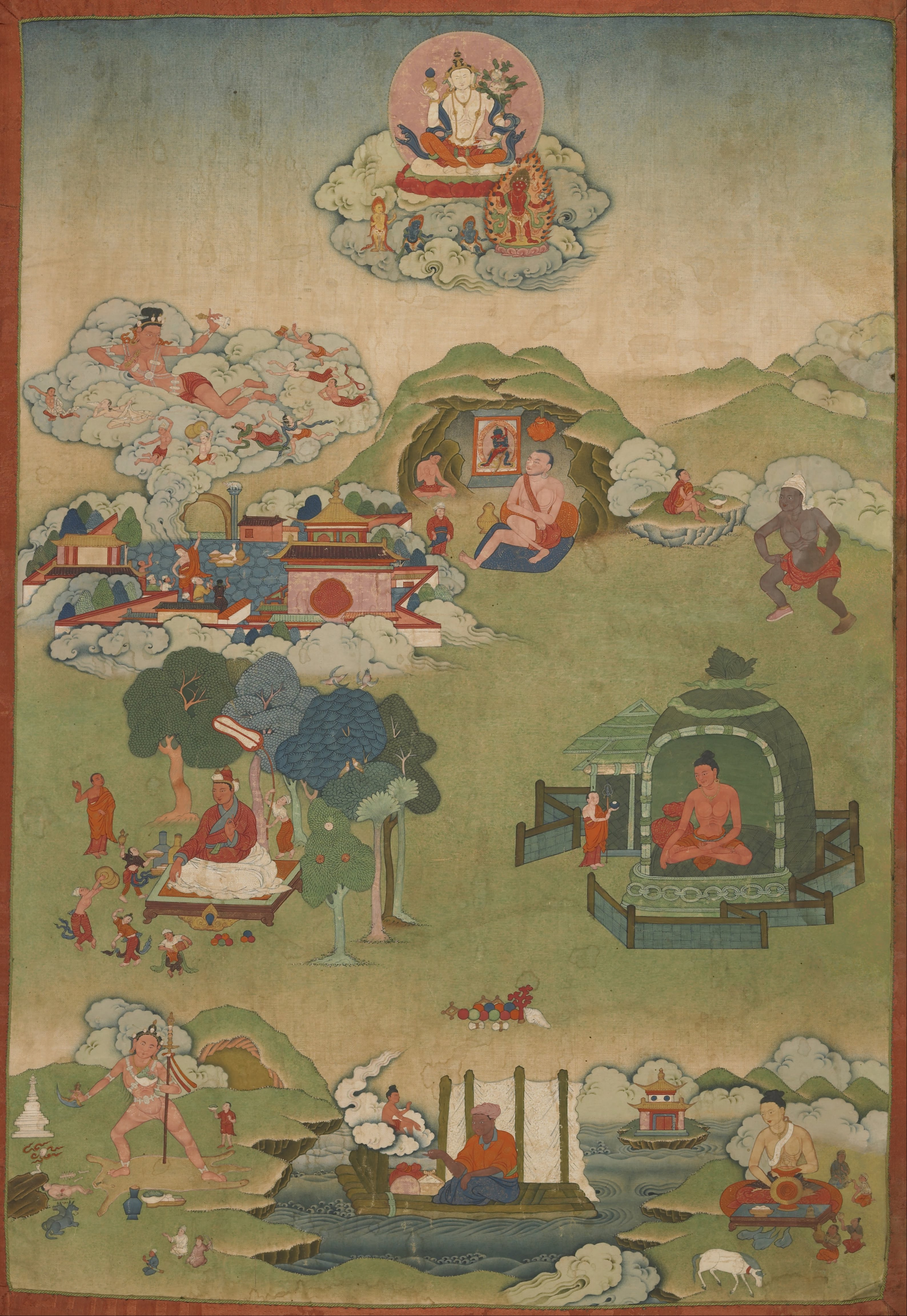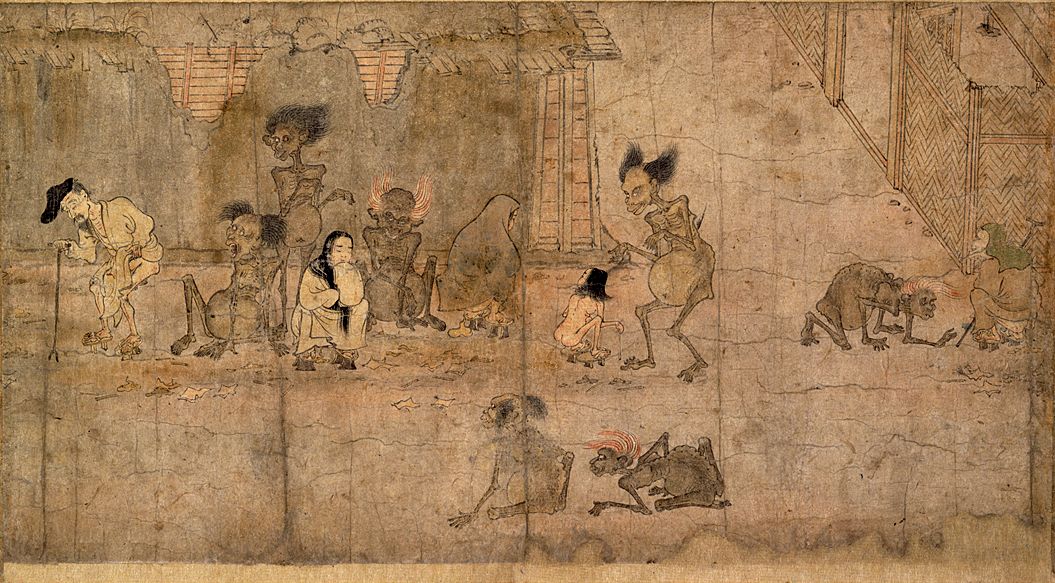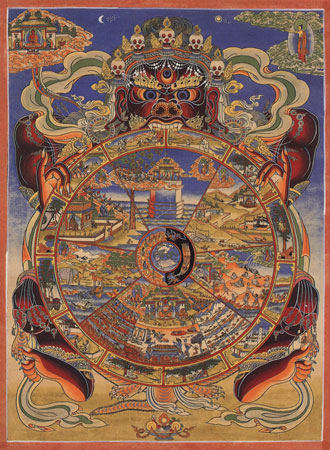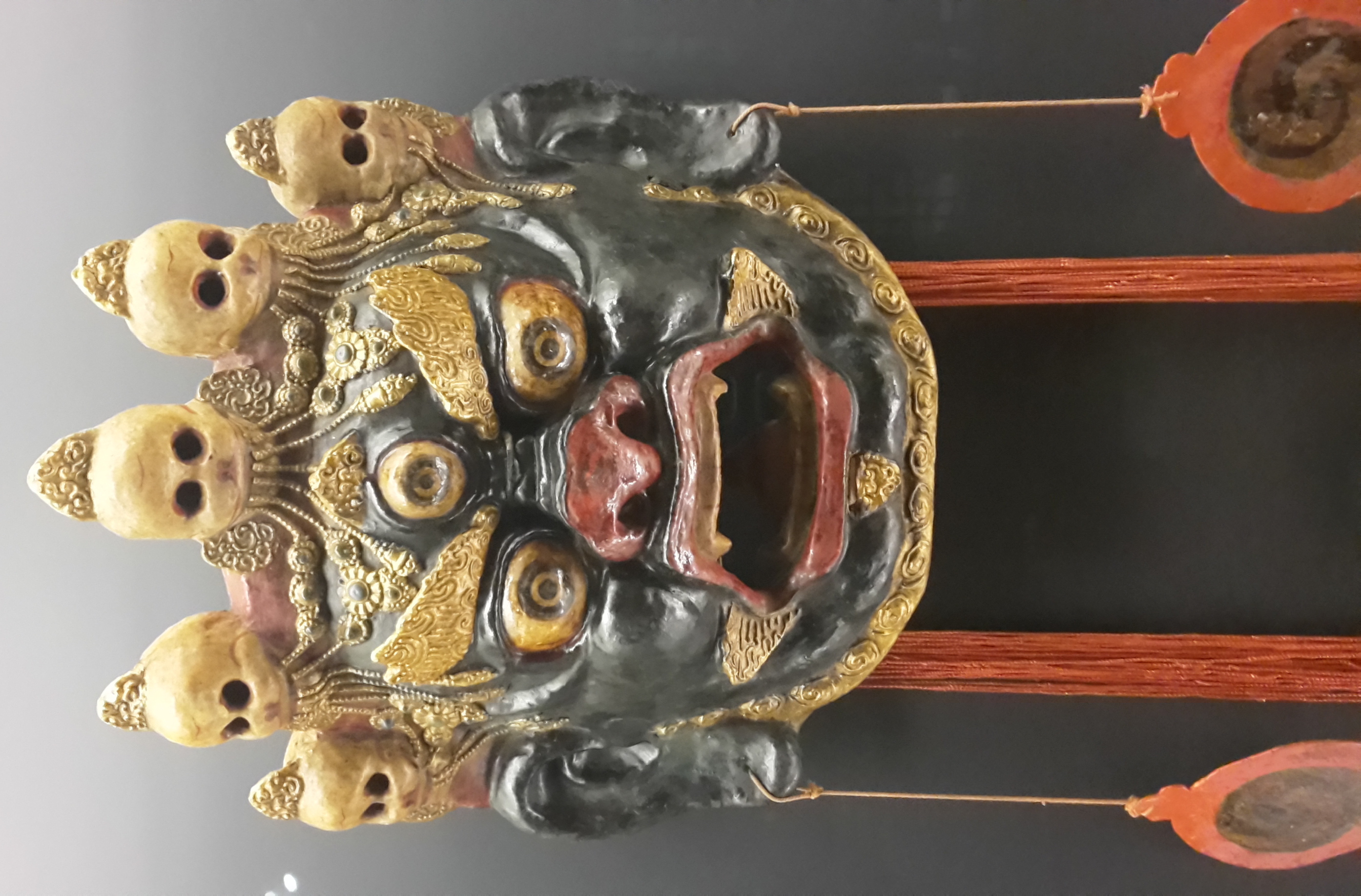|
Shuilu Fahui
The ''Shuilu Fahui'' ( Chinese: 水陸法會; pinyin: ''Shuǐlù fǎhuì''; lit: "Water and Land Dharma Assembly") is a Chinese Buddhist ritual performed by temples and presided over by high monks. The service is often credited as one of the greatest rituals in Chinese Buddhism, as it is also the most elaborate and requires the labor of monastics and temple staff and the financial funding of lay Buddhist sponsors. The ceremony is attributed to the Emperor Wu of Liang, who was inspired one night when he had a dream in which a monk advised him to organize a ceremony to help all beings living on land and in the seas to be surfeited from their suffering, hence the name of the rite. The ritual itself was first compiled by the Chan Buddhist master Bao Zhi ( Chinese: 寶志; pinyin: ''Bǎozhì'', 418 - 514), who is traditionally regarded as an emanation of the Eleven-Headed Guanyin ( Chinese: 十一面觀音; pinyin: ''Shíyīmiàn Guānyīn''), and the liturgy received further edits and ... [...More Info...] [...Related Items...] OR: [Wikipedia] [Google] [Baidu] |
Traditional Chinese Characters
Traditional Chinese characters are a standard set of Chinese character forms used to written Chinese, write Chinese languages. In Taiwan, the set of traditional characters is regulated by the Ministry of Education (Taiwan), Ministry of Education and standardized in the ''Standard Form of National Characters''. These forms were predominant in written Chinese until the middle of the 20th century, when various Chinese family of scripts, countries that use Chinese characters began standardizing simplified sets of characters, often with characters that existed before as well-known variant Chinese characters, variants of the predominant forms. Simplified characters as codified by the People's Republic of China are predominantly used in mainland China, Malaysia, and Singapore. "Traditional" as such is a retronym applied to non-simplified character sets in the wake of widespread use of simplified characters. Traditional characters are commonly used in Taiwan, Hong Kong, and Macau, as ... [...More Info...] [...Related Items...] OR: [Wikipedia] [Google] [Baidu] |
Vajrayana
''Vajrayāna'' (; 'vajra vehicle'), also known as Mantrayāna ('mantra vehicle'), Guhyamantrayāna ('secret mantra vehicle'), Tantrayāna ('tantra vehicle'), Tantric Buddhism, and Esoteric Buddhism, is a Mahāyāna Buddhism, Mahāyāna Buddhist tradition that emphasizes Eastern esotericism, esoteric practices and rituals aimed at Sudden awakening, rapid spiritual awakening. Emerging between the 5th and 7th centuries CE in medieval India, Vajrayāna incorporates a Tibetan tantric practice, range of techniques, including the use of mantras (sacred sounds), dhāraṇīs (mnemonic codes), mudrās (symbolic hand gestures), mandalas (spiritual diagrams), and the visualization of Buddhist deities, deities and Buddhahood, Buddhas. These practices are designed to transform ordinary experiences into paths toward Enlightenment in Buddhism, enlightenment, often by engaging with aspects of Taṇhā, desire and Dvesha, aversion in a ritualized context. A distinctive feature of Vajrayāna is ... [...More Info...] [...Related Items...] OR: [Wikipedia] [Google] [Baidu] |
Lotus Sutra
The ''Lotus Sūtra'' (Sanskrit: ''Saddharma Puṇḍarīka Sūtram'', ''Sūtra on the White Lotus of the True Dharma'', zh, p=Fǎhuá jīng, l=Dharma Flower Sutra) is one of the most influential and venerated Buddhist Mahāyāna sūtras. It is the main scripture on which the Tiantai along with its derivative schools, the Japanese Tendai and Nichiren, Korean Cheontae, and Vietnamese Thiên Thai schools of Buddhism were established. It is also influential for other East Asian Buddhist schools, such as Zen. According to the British Buddhologist Paul Williams, "For many Buddhists in East Asia since early times, the ''Lotus Sūtra'' contains the final teaching of Shakyamuni Buddha—complete and sufficient for salvation." The American Buddhologist Donald S. Lopez Jr. writes that the ''Lotus Sūtra'' "is arguably the most famous of all Buddhist texts," presenting "a radical re-vision of both the Buddhist path and of the person of the Buddha." Two central teachings ... [...More Info...] [...Related Items...] OR: [Wikipedia] [Google] [Baidu] |
Samadhi
Statue of a meditating Rishikesh.html" ;"title="Shiva, Rishikesh">Shiva, Rishikesh ''Samādhi'' (Pali and ), in Hinduism, Buddhism, Jainism, Sikhism, is a state of meditative consciousness. In many Indian religious traditions, the cultivation of Samādhi through various meditation methods is essential for the attainment of spiritual liberation (known variously as nirvana, moksha). In Buddhism, it is the last of the eight elements of the Noble Eightfold Path. In the Ashtanga Yoga tradition, it is the eighth and final limb identified in the '' Yoga Sutras'' of Patanjali. In Jain meditation, samadhi is considered one of the last stages of the practice just prior to liberation. In the oldest Buddhist sutras, on which several contemporary western Theravada teachers rely, it refers to the development of an investigative and luminous mind that is equanimous and mindful. In the yogic traditions and the Buddhist commentarial tradition, on which the Burmese Vipassana movement a ... [...More Info...] [...Related Items...] OR: [Wikipedia] [Google] [Baidu] |
Censer
A censer, incense burner, perfume burner or pastille burner is a vessel made for burning incense or perfume in some solid form. They vary greatly in size, form, and material of construction, and have been in use since ancient times throughout the world. They may consist of simple earthenware bowls or fire pots to intricately carved silver or gold vessels, small table top objects a few centimetres tall to as many as several metres high. Many designs use openwork to allow a flow of air. In many cultures, burning incense has spiritual and religious connotations, and this influences the design and decoration of the censer. Often, especially in Western contexts, the term "censer" is used for pieces made for religious use, especially those on chains that are swung through the air to spread the incense smoke widely, while the term "perfume burner" is used for objects made for secular use. The original meaning of pastille was a small compressed mixture of aromatic plant material an ... [...More Info...] [...Related Items...] OR: [Wikipedia] [Google] [Baidu] |
Spirit Tablet
A spirit tablet, memorial tablet, or ancestral tablet is a placard that people used to designate the seat of a deity or past ancestor as well as to enclose it. The name of the deity or the past ancestor is usually inscribed onto the tablet. With origins in traditional Chinese culture, the spirit tablet is a common sight in many East Asian countries, where forms of ancestor veneration are practiced. Spirit tablets are traditional ritual objects commonly seen in temples, shrines, and household altars throughout mainland China and Taiwan. General usage A spirit tablet is often used for deities or ancestors (either generally or specifically: e.g. for a specific relative or for one's entire family tree). Shrines are generally found in and around households (for household gods and ancestors), in temples for specific deities, or in ancestral shrines for the clan's founders and specific ancestors. In each place, there are specific locations for individual spirit tablets for ances ... [...More Info...] [...Related Items...] OR: [Wikipedia] [Google] [Baidu] |
Naraka
Naraka () is the realm of hell in Indian religions. According to schools of Hinduism, Jainism and Buddhism, ''Naraka'' is a place of torment. The word ''Neraka'' (modification of ''Naraka'') in Indonesian language, Indonesian and Malaysian language, Malaysian has also been used to describe the Jahannam, Islamic concept of Hell. Naraka was also a Khmer language, Khmer word for hell in Cambodia. Alternatively, the "hellish beings" that are said to reside in this underworld are often referred to as ''Narakas''. These beings are also termed in Sanskrit as ''Narakiyas'' (, ), ''Narakarnavas'' (, ) and ''Narakavasis'' (, ). Hinduism Naraka is a realm in the Vedas, a place where souls are sent for the expiation of their sins. It is mentioned primarily in the dharmaśāstra, Dharmashastras, itihāsa, Itihasas, and the Puranas, but also described in the Vedas, Vedic samhitas, the Aranyakas and the Upanishads. Some Upanishads speak of 'darkness' instead of hell. A summary of the Upanis ... [...More Info...] [...Related Items...] OR: [Wikipedia] [Google] [Baidu] |
Preta
''Preta'' (, ''yi dags''), also known as hungry ghost, is the Sanskrit name for a type of supernatural being described in Hinduism, Buddhism, Taoism, and Chinese folk religion as undergoing suffering greater than that of humans, particularly an extreme level of hunger and thirst. They have their origins in Indian religions and have been adopted into East Asian religions via the spread of Buddhism. Preta is often translated into English as " hungry ghost" from the Chinese and East Asian adaptations. In early sources such as the ''Petavatthu'', they are much more varied. The descriptions below apply mainly in this narrower context. The development of the concept of the preta started with just thinking that it was the soul and ghost of a person once they died, but later the concept developed into a transient state between death and obtaining karmic reincarnation in accordance with the person's fate. In order to pass into the cycle of karmic reincarnation, the deceased's family mus ... [...More Info...] [...Related Items...] OR: [Wikipedia] [Google] [Baidu] |
Six Paths
The Six Paths in Buddhist cosmology are the six worlds where sentient beings are reincarnated based on their karma, which is linked to their actions in previous lives. These paths are depicted in the ''Bhavacakra'' ("wheel of existence"). The six paths are: # the world of gods or celestial beings ( ''deva'') # the world of human beings ( ''manushya'') # the world of warlike demigods (''asura'') # the world of animals ('' tiryagyoni'') # the world of hungry ghosts (''preta'') # the world of Hell (''naraka'') The first three paths are known as "the three benevolent destinies" (''kuśalagati''), where beings experience varying degrees of virtue, pleasure, and pain. The last three paths are referred to as the three unbenevolent destinies (''akuśalagati''), where beings lack virtue and suffer predominantly. Typically, we as human beings only perceive the animals around us. The first Buddhist texts mention only five paths without distinguishing between the paths of ''deva'' and ''asu ... [...More Info...] [...Related Items...] OR: [Wikipedia] [Google] [Baidu] |
Dharmapala
A ''dharmapāla'' is a type of wrathful god in Buddhism. The name means "''dharma'' protector" in Sanskrit, and the ''dharmapālas'' are also known as the Defenders of the Justice (Dharma), or the Guardians of the Law. There are two kinds of ''dharmapala'', Worldly Guardians (''lokapala'') and Wisdom Protectors (''jnanapala''). Only Wisdom Protectors are enlightened beings. Description A protector of Buddhist dharma is called a ''dharmapala''. They are typically wrathful deities, depicted with terrifying iconography in the Mahayana and tantric traditions of Buddhism. The wrathfulness is intended to depict their willingness to defend and guard Buddhist followers from dangers and enemies. The '' Aṣṭagatyaḥ'' (the eight kinds of nonhuman beings) is one category of ''dharmapālas'', which includes the Garuda, Deva, Naga, Yaksha, Gandharva, Asura, Kinnara, and Mahoraga. In Vajrayana iconography and thangka depictions, ''dharmapala'' are fearsome beings, often with ma ... [...More Info...] [...Related Items...] OR: [Wikipedia] [Google] [Baidu] |
Huayan
The Huayan school of Buddhism (, Wade–Giles: ''Hua-Yen,'' "Flower Garland," from the Sanskrit "''Avataṃsaka''") is a Mahayana Buddhist tradition that developed in China during the Tang dynasty (618-907).Yü, Chün-fang (2020). ''Chinese Buddhism: A Thematic History'', p. 160. University of Hawaii Press. The Huayan worldview is based primarily on the '' Buddhāvataṃsaka Sūtra'' ( zh, t=華嚴經, p=Huáyán jīng, ''Flower Garland Sutra'') as well as on the works of Huayan patriarchs, like Zhiyan (602–668), Fazang (643–712), Chengguan (738–839), Zongmi (780–841) and Li Tongxuan (635–730). Another common name for this tradition is the Xianshou school (''Xianshou'' being another name for patriarch Fazang).Hammerstrom, Erik J. (2020). ''The Huayan University network: the teaching and practice of Avataṃsaka Buddhism in twentieth-century China'', chapter 1. Columbia University Press. The Huayan School is known as Hwaeom in Korea, Kegon in Japan and Hoa Nghi ... [...More Info...] [...Related Items...] OR: [Wikipedia] [Google] [Baidu] |
Tiantai
Tiantai or T'ien-t'ai () is an East Asian Buddhist school of Mahāyāna Buddhism that developed in 6th-century China. Drawing from earlier Mahāyāna sources such as Madhyamaka, founded by Nāgārjuna, who is traditionally regarded as the first patriarch of the school, Tiantai Buddhism emphasizes the "One Vehicle" () doctrine derived from the influential '' Lotus Sūtra'', as well as the philosophy of its fourth patriarch, Zhiyi (538–597 CE), the principal founder of the tradition. Brook Ziporyn, professor of ancient and medieval Chinese religion and philosophy, states that Tiantai Buddhism is "the earliest attempt at a thoroughgoing Sinitic reworking of the Indian Buddhist tradition." According to Paul Swanson, scholar of Buddhist studies, Tiantai Buddhism grew to become "one of the most influential Buddhist traditions in China and Japan." Tiantai is sometimes also called "The Dharma Flower School" (), after its focus on the '' Lotus Sūtra'', whose Chinese title tra ... [...More Info...] [...Related Items...] OR: [Wikipedia] [Google] [Baidu] |









